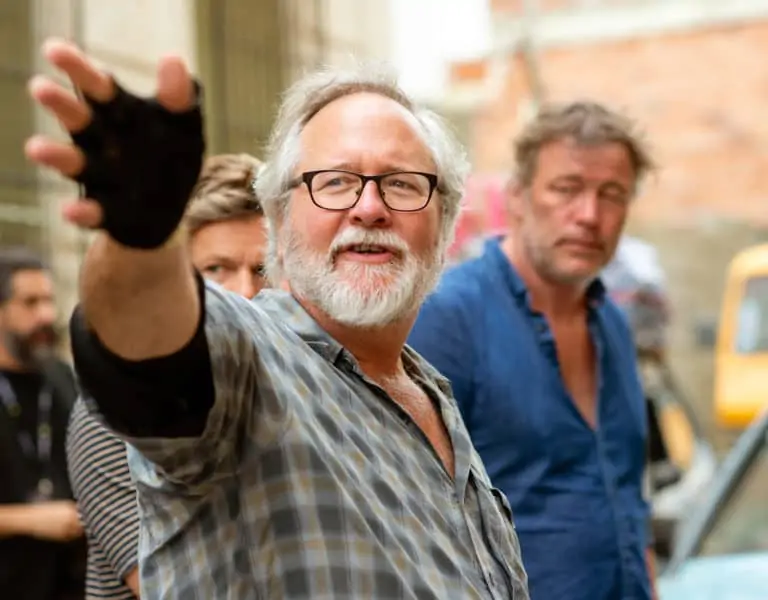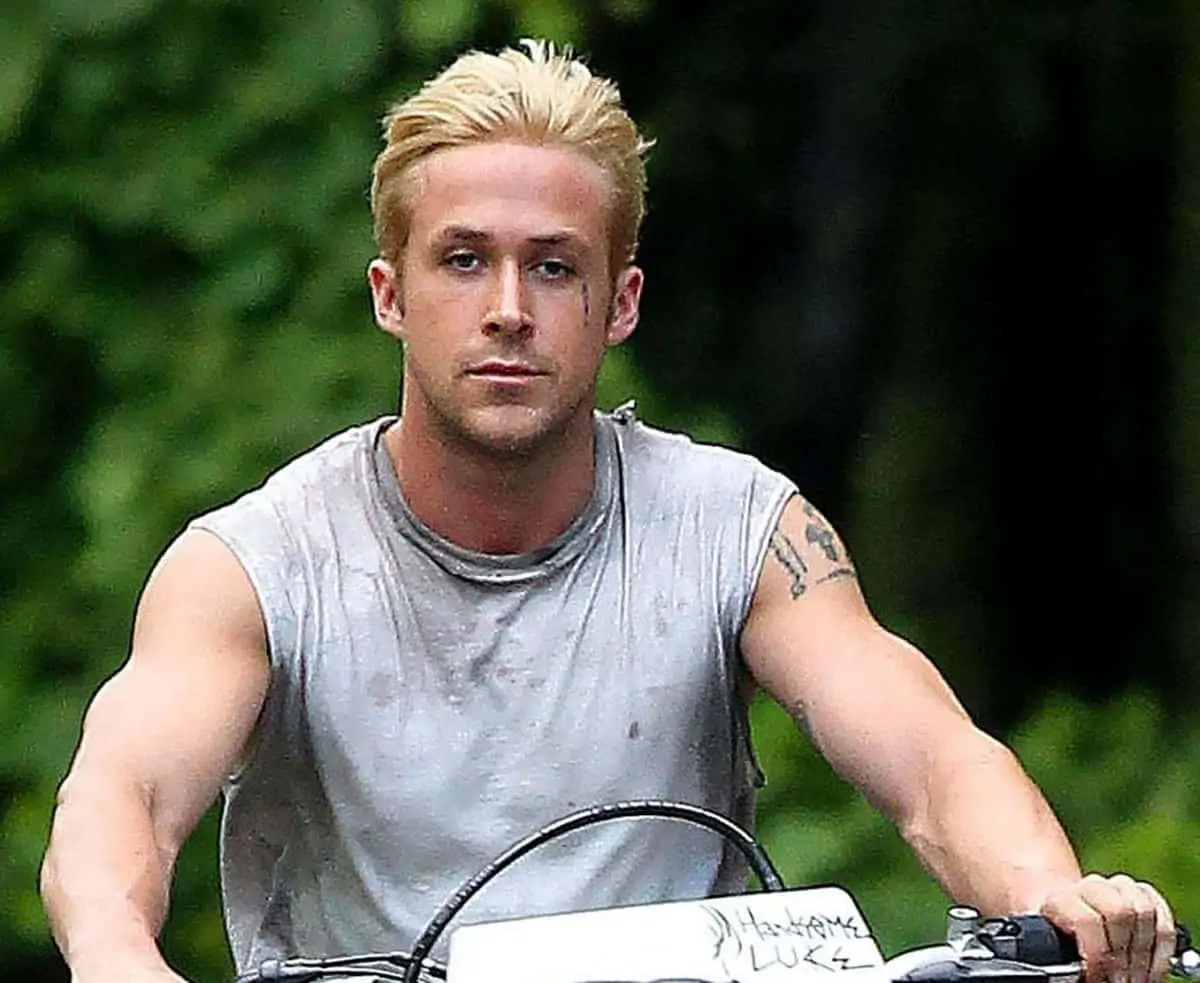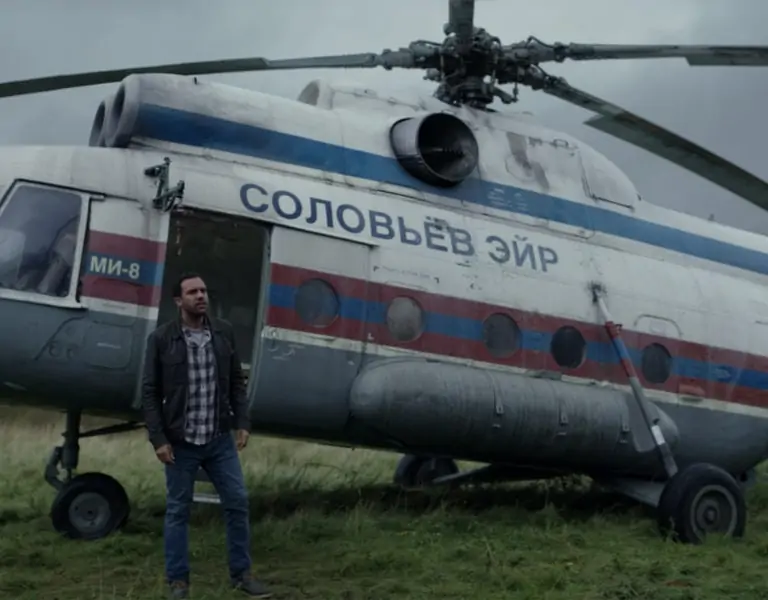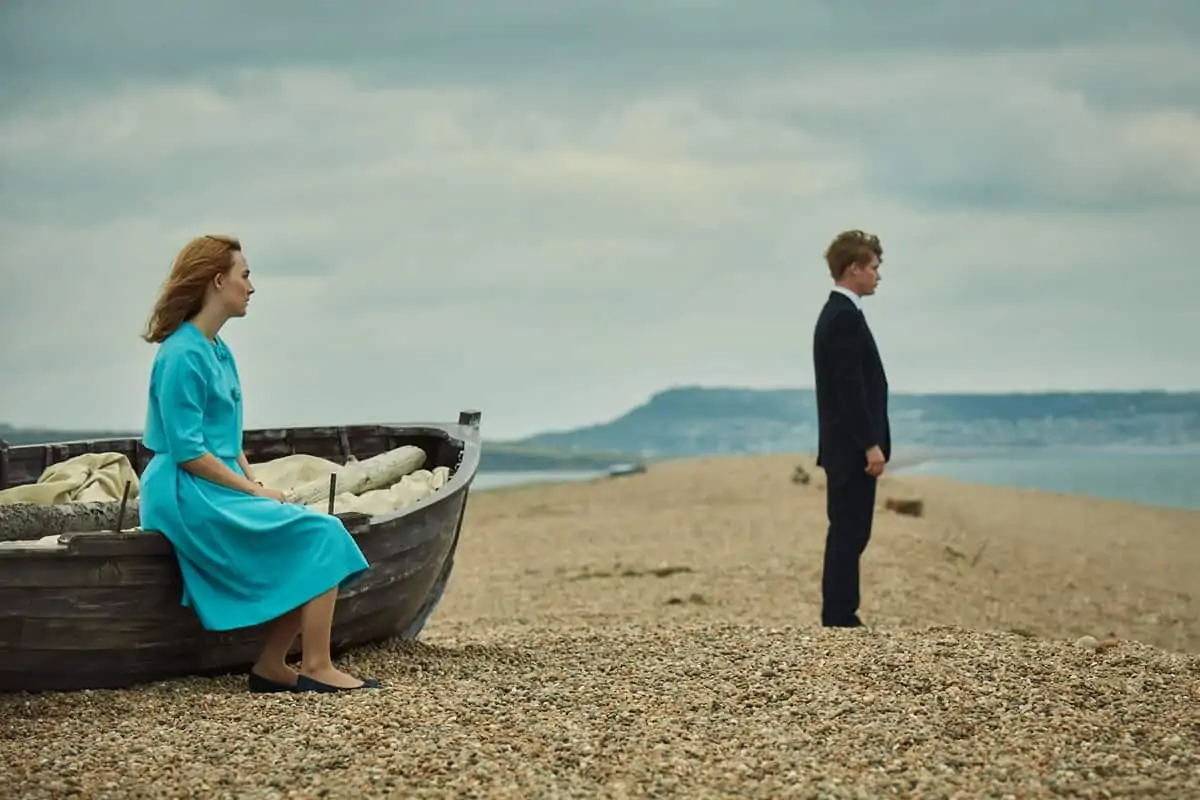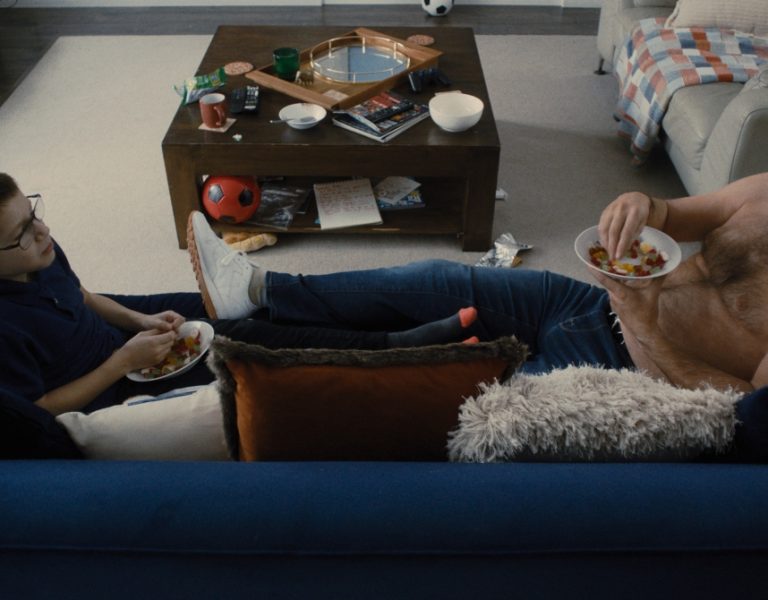A BRUTAL BETRAYAL
The visual mastery of cinematographer Sean Bobbitt BSC supports an emotional narrative journey in Shaka King’s Judas and the Black Messiah, the true story of deceit, racial injustice, and the killing of Black Panther Party leader Fred Hampton.
Passionate and honest in its approach to recounting the events surrounding the betrayal and assassination of Illinois Black Panther Party Chairman Fred Hampton, Warner Brothers’ timely biographical drama Judas and the Black Messiah echoes not only the recent Black Lives Matter movement but the actions of the many people in the years preceding who, like Hampton, fought for the Black community’s freedom and an end to police brutality.
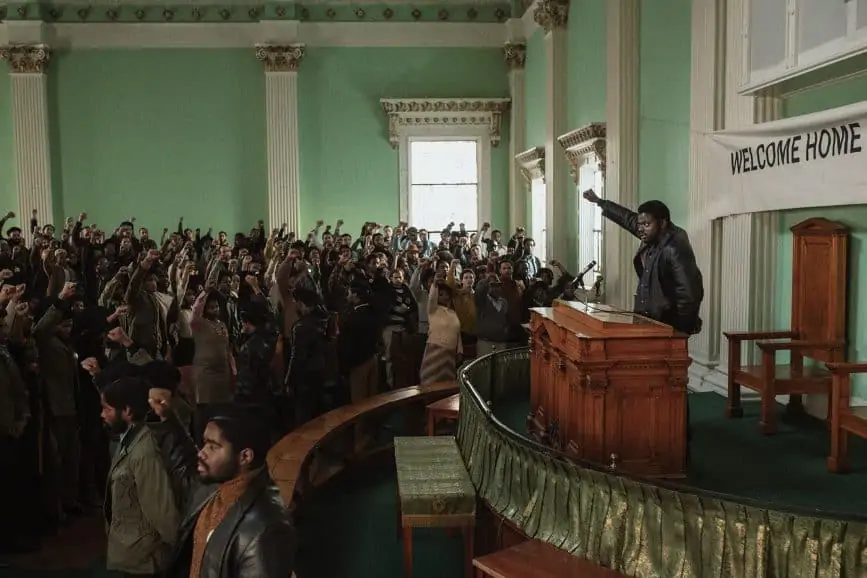
The awards contender – directed and co-written by Shaka King (Newlyweeds) – details the story of William O’Neal (Lakeith Stanfield), a petty criminal offered a plea deal to become an FBI informant and gather intelligence on young, charismatic activist Hampton (Daniel Kaluuya), resulting in the 21-year-old’s brutal murder by Chicago police in 1969.
“I feel honoured to have been asked to make this film because it’s a story that is so relevant to our time; in fact, every time since 1968,” says cinematographer Sean Bobbitt BSC, the talent behind the powerful visuals that helped retell other true stories in filmmaking form such as Steve McQueen’s Hunger (2008), the hard-hitting production about the Northern Irish hunger strike, and the brutal tale of slavery 12 Years a Slave (2013).
“This film highlights how little has changed in all those prevailing years since Fred Hampton’s death. It’s such an important story for people to discover and understand. Reading the script, I was shocked by what happened at that point in history, and I was highly motivated to get involved with the film. To my horror, it was a part of contemporary American history that I knew nothing about, and I felt quite embarrassed about that.”
The week after reading the script, Bobbitt met director King in New York to explore the possibilities for the production. “Instantly, Shaka’s knowledge, passion, and dedication to the story were apparent. As we examined the 200 or more photographs he had collected, it was immediately obvious that not only did I want to shoot this film, but we really needed to make this film.”
Early conversations were heavily influenced by the photographs which depicted the period in which the devastating events took place. “The film is a drama about a very specific point in American history when, particularly in black neighbourhoods, the degradation, poverty and oppression experienced by certain areas had been portrayed in some very striking images,” says Bobbitt.
The pair wanted to reference rather than replicate such visuals from the era to create a period feel, particularly the distinctive primary colour saturation and high contrast of Kodachrome and Ektachrome film stocks. Bobbitt endeavours to approach every production with an open mind to ensure each film’s visuals are unique. “I only know how to do things in a certain way, so there is a continuity. I try to forget the previous movies I have made and just focus on and listen carefully to what the director is saying.”
When evolving the film’s look Bobbitt relishes the experience of working alongside the production designer, which on this occasion was Sam Lisenco. Bobbitt had access to Lisenco’s team’s meticulous research so he could see the images influencing their design ideas. “Sam is very collaborative, passionate and eloquent in describing his ideas and how he plans to execute them. I took note from what he was exploring and constructing as well as touching base with hair and makeup and the costume department. This organic process is imperative to produce a continuity throughout the look of the whole film.”
Serendipity also came into play, an element of filmmaking that excites Bobbitt the most. Whilst location scouting for the Black Panthers’ office the team discovered a derelict building that piqued their interest. “It was a rather scary place, but it was painted the most amazing green. Immediately, we all thought, ‘Wow. This is so unusual, we should probably embrace this,’” he says.
Green became a recurring theme as the tones reappeared throughout the pre-production process. “We realised we needed to hold onto and build on it, so these greens were later added to with yellow, blue and brown tones. That colour contrast with the darker flesh tones added a lot of colour depth to the image. This was embraced and explored right the way through to the final grade, building on what was already there whilst trying to incorporate an Ektachrome look with a contemporary feel.”
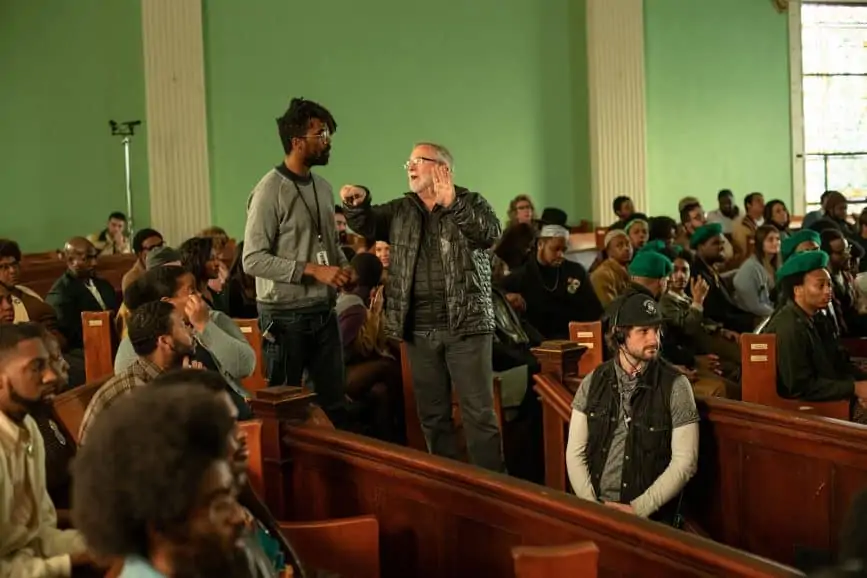
Lighting the fuse
King’s passion and ideas were instrumental in “lighting the fuse” of Judas and the Black Messiah. “What a remarkable talent,” says Bobbitt. “Shaka’s grasp of the subject, sheer humanity and leadership skills along with his incredible vision for how he wished to tell the story gave everyone a strong focus to create that believable world.”
During the film’s early development, King and Bobbitt watched a selection of period and contemporary films, identifying what they wanted to avoid as much as what they hoped to create. The search for a suitable location in which to recreate 1960s Chicago led the crew to consider an array of possibilities. “Chicago can be a fairly difficult place to film and quite expensive, so we then considered Pittsburgh, but the rolling hills were not in line with the poverty and deprivation that was experienced in Chicago at the time the film is set.”
Cleveland, Ohio, was found to be the most fitting shooting location due to its lengthy streets leading to the downtown area – a distinctive feature of Chicago. The art department used the city’s inherent natural texture as a foundation to build upon when creating a believable world in which to tell the story.
“Sadly, some parts of Cleveland have suffered industrial decline. There are blighted areas where buildings haven’t been touched since the ‘60s and some that were abandoned in the 1966 riots,” says Bobbitt. “And although it’s a big city, there’s little traffic which made it easier when we were bouncing from place to place, filming all over Cleveland.”
Finding a strong frame
To create the film’s rich visual tapestry Bobbitt paired the ARRI Alexa Mini LF with ARRI DNA LF lenses. “I’ve become very fond of the LF – the amount of colour information you can capture when shooting RAW is fantastic, meaning you can take it to many places in the grade effectively and easily. The DNA lenses have a wonderful funkiness to them. Unfortunately, I didn’t have time to tune them, but I hope to do this next time,” he says.
When shooting the film full frame with a 2.39:1 extraction, the lenses offered Bobbitt “just enough of the feel of an older anamorphic lens with a lovely drop off around the edges”. This vignetting, softness and slightly lower contrast helped augment the period look.
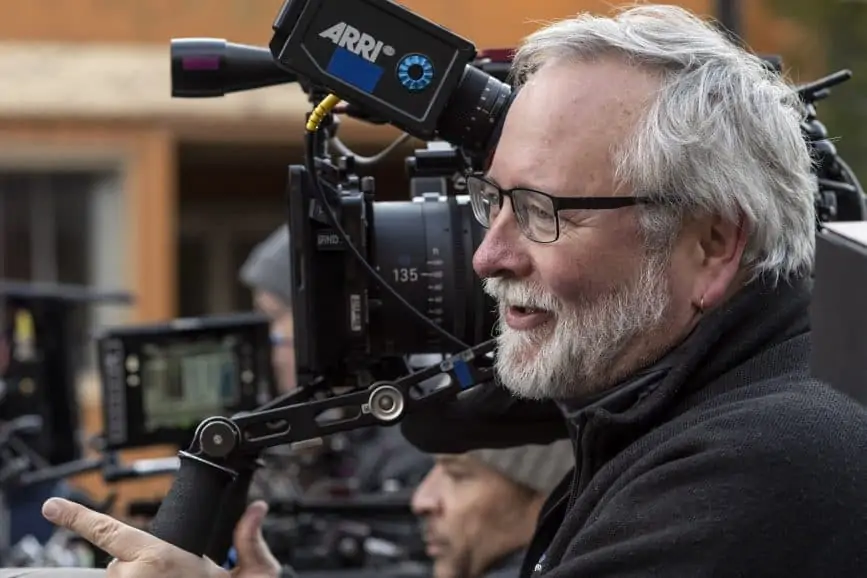
Opening with footage of a recreated interview with O’Neal, Judas and the Black Messiah ends with archive interview footage from the real interview, both scenes breaking away from the film’s 2.39:1 aspect ratio. “After some discussion, we decided audiences are used to changes in aspect ratio. Making this visual decision automatically said ‘archive’ which was a useful tool and produced a more seamless connection between the interview at the beginning and end whilst holding onto that sense of the past to make the film feel as if it’s of the era,” says Bobbitt.
Being a cinematographer with a passion for operating, Bobbitt is excited by the possibilities framing and composition present. “That’s one reason I tend to gravitate towards a widescreen aspect ratio – there’s just so much more you can do in terms of composition. Also, when you have an ensemble, as we did with the Black Panthers, you can find those frames you can fit them all into in a really interesting composition and then explore unusual developing shots that tell the whole story without requiring a lot of pickup shots.”
I’ve become very fond of the ARRI Alexa Mini LF – the amount of colour information you can capture when shooting RAW is fantastic, meaning you can take it to many places in the grade effectively and easily.
Sean Bobbitt BSC
King was also fascinated by finding a strong frame and allowing the performance to evolve within it. At every location, and in every scene, the pair set out to achieve this shared goal and spent countless hours meeting, usually at weekends, to talk through every scene to gain a mutual understanding of their direction. “I spent much time alone with the camera at the locations, moving through the scenes and examining the potential angles,” says Bobbitt.
After taking hundreds of photographs, he manipulated them in Adobe Lightroom, changing the aspect ratio to suit, and adding a slight grade. These were presented to King, along with the possible angles for each location so the pair could finalise much of the basic shot structure they hoped would work for each scene.
Close-ups were reserved for specific and significant moments such as when Fred Hampton is at his most powerful and persuasive when delivering a speech to a large crowd or when he is his most vulnerable in scenes with his partner Deborah Johnson. “The 2.39:1 aspect ratio, particularly with the LF format, creates a drop off in focus so you can really pull a face out of the background, but still be left with a lot of background to compose with. That lent itself to those more intimate moments,” explains Bobbitt. “The aim here was to really emphasise his power as an orator and his compassion as an individual. But if you use those close-ups too much, that power is lost, so we carefully considered when to go to a close-up.”
The 2.39:1 aspect ratio also lent itself to the wide shots, used to create impact when FBI director J. Edgar Hoover (Martin Sheen) stands in a vast expanse of black as he speaks to a crowd. “You can get so much information into the frame. It was also about trying to contrast that sheer scale of the number of FBI agents who were arrayed against the Black Panthers, and the FBI’s sophistication and ruthlessness,” adds the DP.
A unique workflow was developed in which DIT Mark Wilenkin would grade throughout the shoot, so by the end of each day Bobbitt could work through, shot by shot, finessing the rushes, which Wilenkin would then complete. “He created a remarkable workflow, so the rushes were available almost immediately for production, meaning there was a remarkable visual continuity when the film was edited. It also meant I had an eye on the rushes before they disappeared, so that there were no surprises,” says Bobbitt.
Classic filmmaking
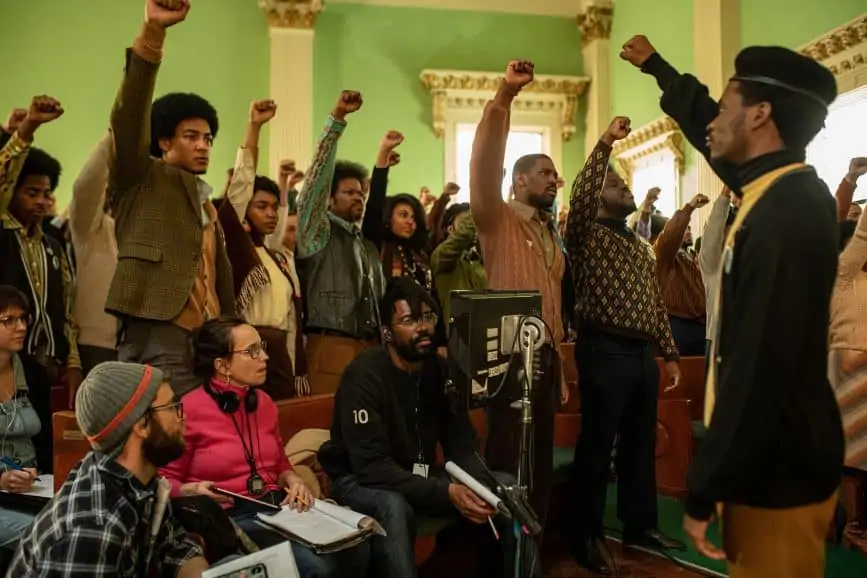
It was agreed early on that movement would be integral to Judas and the Black Messiah’s storytelling. “These were young dynamic characters, around 18 to 21 years of age, who were moving forward and trying to create change. There was a vibrancy to them we wanted to communicate, not in an induced way but in a way that felt like the camera naturally followed the action,” says Bobbitt.
King wanted the film to be shot in a traditional manner, primarily single camera, with a tracking dolly, using cranes when the budget permitted and Steadicam for many of the walk and talk scenes and developing shots. “It’s very classic filmmaking in that regard, harking back to the time of the auteur director and the director’s strong vision leading the audience through the story,” says Bobbitt. “We tried to keep it fairly simple and straightforward overall – the idea being that not too many camera tricks would be incorporated.”
Bobbitt switched to handheld to capture moments of conflict – such as the shootouts or the large impromptu demonstration outside the police station – to emulate the feeling of a news camera documenting the event and drawing on the cinematographer’s previous experience as a news cameraman.
King wanted one night-time exterior scene, when O’Neal drives to pick up some of the Black Panthers, to stand out with subtlety. After discussing the scene with Bobbitt, they divided it up into two shots. First panning from the shops lining the street to O’Neal smiling behind the wheel of the enormous vehicle he is driving down the boulevards of Chicago, the scene then cuts to a door mount shot as O’Neal does a U-turn to pick up the Black Panthers.
“I had used a rig on a commercial shoot that was fixed to the car and allowed the camera to stay next to the vehicle as it moves, so we put a remote head on that rig for the scene,” says Bobbitt. “Chaka asked if there was a way the camera could then stay behind the car as it drives away, so key grip Mackie Roberts, dolly grip Kelly Borisy, 1st AC Greg Williams, and everyone else we could get involved, tried to figure out how to transfer a solid fixed camera without anyone noticing, as the car drives away.”
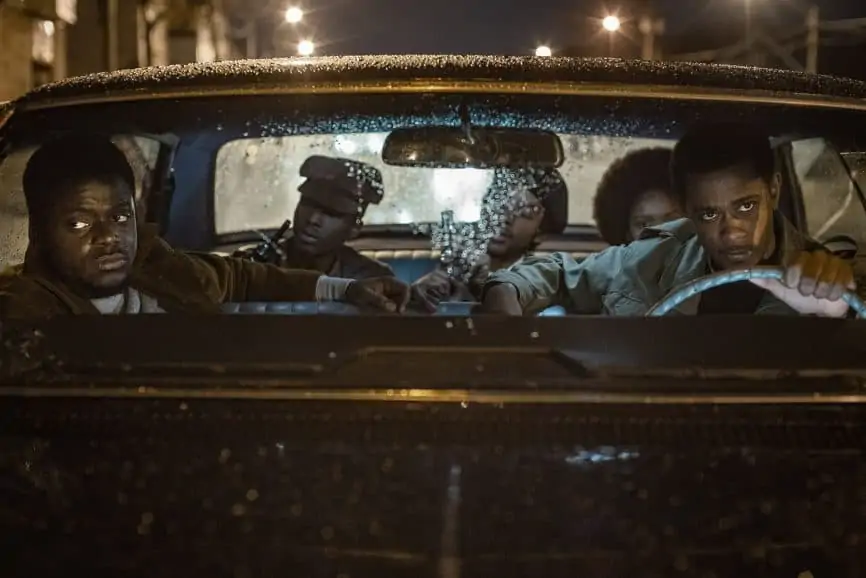
The crew investigated a variety of magnetic releases, special plates, and unusual ways to mount the camera and then transfer it onto the Steadicam, before arriving at the perfect solution – attaching a quick release system and Bobbitt shooting the last portion of the scene handheld. “So, as the Black Panthers entered the car, the vehicle shook and at that point I detached the camera from the car mount and then as the car drove away, I panned with it. We spent ages trying to figure that scene out – it was probably one of the trickiest sequences in the film.”
Being respectful to the story
The shootout scenes were among those that King and Bobbitt meticulously storyboarded. “It was a fairly complex story to tell, with the narrative working on several levels, so there were a lot of key beats to hit for it all to make sense,” explains Bobbitt.
Whilst filming the shootout at the Black Panther headquarters the road in front had to be closed because it was a major thoroughfare, which in turn restricted the crew’s filming time. “As the city quite rightly gave us very strict, limited times in which to shoot, we had to pare it right down and be very clear about the shots we wanted to capture.”
This required multiple visits to the location prior to filming to talk the scene through in detail. The stunt team also completed extensive training and rehearsals to guarantee the sequence would run smoothly. Much consideration was given to the visual approach to take for one of the film’s most pivotal, horrific, and contentious moments – the assassination of Fred Hampton. King carried out detailed research and spoke to those who had read all the transcripts from the trials following the events. “It was vital we presented that scene in a way that was not disrespectful or sensational,” says Bobbitt. “We decided on a frame with Hampton’s partner Deborah Johnson in the foreground and then you hear the gunshots – it seemed to organically be the best choice.”
My approach to lighting, especially on a film such as this which features a slightly heightened naturalism, is to use as few lights as possible and to light as much from the exterior, especially for wide shots.
Sean Bobbitt BSC
The shootout was one of the few scenes shot using two cameras, along with a mixture of handheld, Steadicam and tracking dolly. It was also the only scene filmed in a studio location due to the overhead shot following the action from room to room. “We had to choreograph that very carefully because where we built that set was not a proper studio which meant there were height limitations. We wanted to use a motion control camera above the set looking down so we could achieve all that movement in one, replicating the exploding walls, and adding the dust and debris flying across the rooms afterwards to ensure the cast’s safety.
“That took a lot of figuring out, including how to light a set like that. It’s a night-time scene so it’s supposed to be dark and we needed to achieve that balance between the darkness and light so we could see the faces and the reactions, but also feel the horror they went through being assaulted in such a brutal way.”
By far the most technically demanding scene to film due to its technical complexities, the shootout demanded an approach to be adopted that was faithful and not sensational all the way through to the final edit. “The way that sequence was cut by editor Kristan Sprague is brilliant,” says Bobbitt. “The whole film has been extremely well edited, but the shootouts were compressed in a way that makes them so powerful. We didn’t have the time, money or desire to shoot a contemporary-style big movie shoot out – we were looking for something more realistic. We also wanted it to last about the same amount of time it did in real life, which required a lot of thought and planning.”
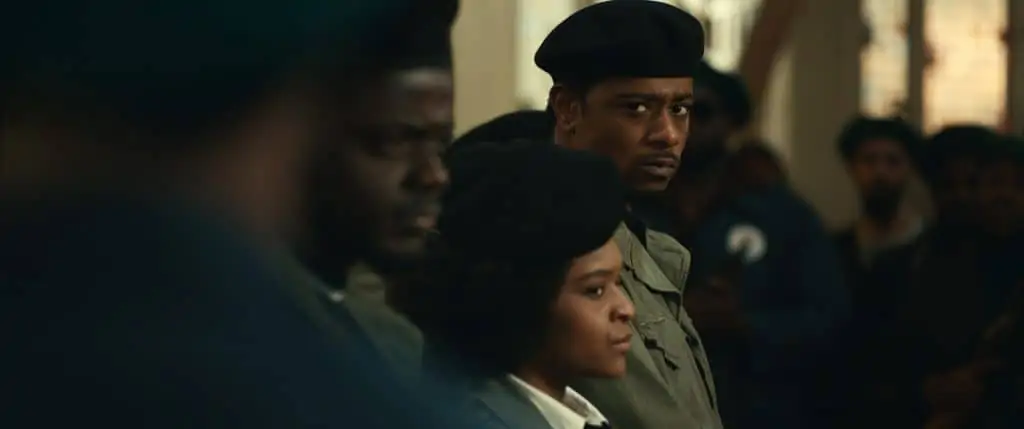
Stylised visual concepts
As Bobbitt has developed his craft throughout a remarkable filmmaking career, his focus on lighting has shifted even more from the technical to the creative. “My approach to lighting, especially on a film such as this which features a slightly heightened naturalism, is to use as few lights as possible and to light as much from the exterior, especially for wide shots,” he says.
“And then when we move into close-ups, we bring in smaller units. The bi-colour, Rosco Mini Mix switch light compact LEDs make it so quick to add a bit of sidelight, backlight, key, or eye light, which we used a lot of in this film. We also used an awful lot of larger 18kW and 20kW lights outside windows on cherry pickers. I dread to think how many we had outside the church for Fred Hampton’s big speech.”
Battery-powered 4ft Astera tube lights with built in wireless controls were invaluable for interior scenes. “They’re so quick and easy to set up, focus and control and they offer an infinite range of colour. Gaffer Jeremy Long also did an amazing job pulling in lighting crew members from all over the place because in Cleveland there is not much of a filming infrastructure and few production companies or crew. It’s always a challenge when a crew hasn’t worked together, especially when working with limited shooting times for some scenes and when many locations are difficult to access, but Jeremy and his team did a remarkable job.
“The whole crew were there because they really wanted to make this film and tell this story. What really stood out is that sense of camaraderie, professionalism, and dedication from every department that united to create a believable world in which these characters lived and sometimes tragically died.”
Developing stylised visual concepts that saw light used creatively in the visual storytelling was also enhanced by the talent of the cast. In one scene – shot in the same location as The Shawshank Redemption, theOhio State Reformatory in Mansfield, Ohio – we find Hampton in his pitch-black prison cell and a slither of light illuminates his face and a sheet of paper.
“That prison is a really distressing place – it’s just inhuman what people were subjected to in those solitary confinement cells,” says Bobbitt. “There was no light other than what would shine through the hatch. So, in that scene when the hatch is opened it was obvious that was where the key light had to come in. Daniel Kaluuya is such a remarkable actor and he immediately knew what to do with that light to make the scene shine. It was a simple idea that came from the reality of the situation.”
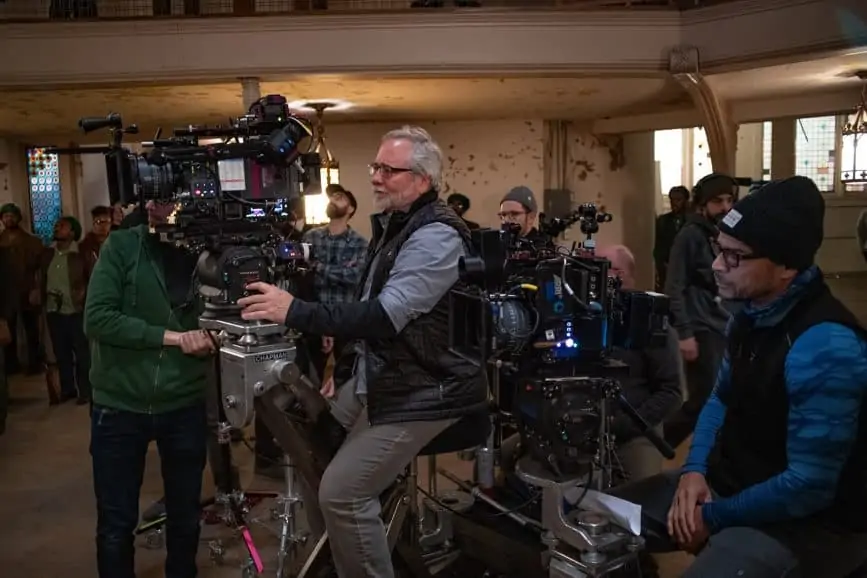
A story of significance
Bobbitt has developed a solid relationship and shorthand with Company 3’s senior colourist Tom Poole, who has coloured the cinematographer’s last 11 films. Bobbitt considers him to be an artist who embraces the ideas and concepts of a film’s visual approach.
“He’s always developing his own secret sauces, as we call them, which are unique LUTs. He came up with an overall look for this film which is exactly what Shaka and I had wished for and then pushed it that one step further,” says Bobbitt.
Shooting was completed ahead of the pandemic, between October and December 2019, but the film was graded at the height of the first lockdown in October 2020. “I was recovering from COVID-19 myself at the time and not in the best of shape,” says Bobbitt. “However, I was fortunate that Warner Brothers arranged for a tower, special router and antenna to be sent over and Company 3 brought in large OLED monitors so I could be involved in the grade from my boat.
“Immense respect to them for going to all that effort and giving me the opportunity to work with Tom and Shaka to finish the film. The grading is always key for me; I shoot for the grade. There are things I will let go on the set in the knowledge we can come back to make them right in the grade, so it would have been a nightmare not to have been part of that process.
“There were some very specific things I set up for the grade that could well be lost, but having said that, Tom Poole is always at least one or two steps ahead of me. It’s fantastic to have that sort of working relationship and it was a great experience as well as an incredibly restorative process for me, having been through a period of illness.”
Shot to be enjoyed on the big screen, Judas and the Messiah, is initially being streamed on HBO Max and viewed by home audiences due to the pandemic. Despite the frustration of the story not being able to unfold in cinemas, Bobbitt sees one advantage to the change of plan: “In some ways it’s a blessing the film is being seen on smaller screens to begin with, because the story needs to be shared with a lot of people. But to get the full emotional impact I really hope they will be able to see it in the cinema in the future, because it’s not just the visuals. The soundtrack is amazing and original. It just adds another layer of emotion that not everyone will fully experience when viewing the film at home.”




